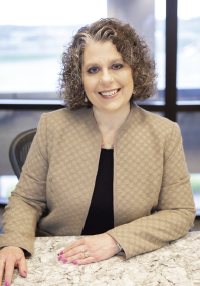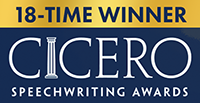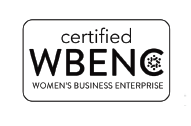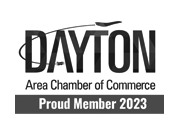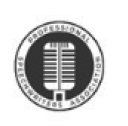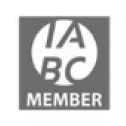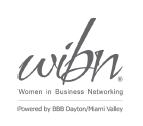How to make a keynote speech resonate when your audience is wildly diverse
Worried whether your speech has the power to connect with listeners from very different backgrounds and levels of experience?
Jump-start your thinking with these seven steps based on a Cicero Speechwriting Award-winning keynote that resonated with 250 men and women from age 18 to 80.
When Barbara Hayde — former president of The Entrepreneurs Center (TEC) in Ohio — received an invitation to deliver the keynote address at the University of Dayton’s annual School of Business Entrepreneurship Dinner a few years ago, she knew what she was up against: a wildly diverse audience.
 Attendees that evening would include:
Attendees that evening would include:
- Current students and graduating seniors in the university’s entrepreneurship program
- Entrepreneurs named as finalists in UD’s prestigious, nationally recognized Business Plan Competition
- School of Business faculty and staff
- Highly successful entrepreneurs who support the entrepreneurship program and mentor students
“What can I possibly say that will resonate with all of them?” she asked me.
In spite of her question, Hayde was still eager to speak about TEC, a technology accelerator and business incubator in Dayton. That’s because she knew this keynote was a strategic opportunity to introduce new and future entrepreneurs to TEC and its resources – (perhaps they’d be clients someday?) – and maybe even attract successful entrepreneurs as volunteers in TEC’s network of mentors.
Here’s how we embraced this wildly diverse audience in her speech, “Real Entrepreneurs Don’t Go It Alone,” which later won four speechwriting awards, including a Cicero Speechwriting Award from Vital Speeches of the Day.
Follow these steps the next time you need to speak to a wildly diverse audience.
1. First, map your diverse audience into distinct groups.
Then decide what is unique about each group. Here are the details we put on paper before drafting the first idea for Hayde’s speech:
- Audience 1: Current students and graduating seniors in the university’s entrepreneurship program. We knew the 20-minute keynote had to grab the attention of millennials, who expect instant gratification, have shorter attention spans, document everything online and frequently multitask. The message had to be relevant, understandable and actionable for them – or they would instantly tune out.
- Audience 2: Entrepreneurs named as finalists in UD’s prestigious, nationally recognized Business Plan Competition. This group was a 50/50 split of both women and men ranging in age from 25 to 45. We knew this group would be a little distracted listening to the keynote because immediately afterward, they would learn who among them would win the Business Plan Competition and take home the $25,000 prize. This was the most challenging group we needed to reach.
- Audience 3: School of Business faculty and staff. These individuals – mostly men, many of them entrepreneurs – have attended many dinners and keynotes like this one, so their expectations for something truly inspirational would likely not be high (could we “wow” them?). Past speakers at this event have been mostly men, so having a woman address the audience would be unique.
- Audience 4: Highly successful entrepreneurs who support the entrepreneurship program and mentor students. Many of these individuals knew Hayde as a guest lecturer to UD students, but they probably never heard her address such a diverse audience in a public setting. Because of their many years of experience as entrepreneurs, Audience 4 was probably not expecting to hear anything particularly new about entrepreneurship. We knew we needed to inspire this hard-to-reach group in some way.
Understanding exactly where your audience is coming from — on the day and at the time of your speech — is key to deciding how you will connect with them.
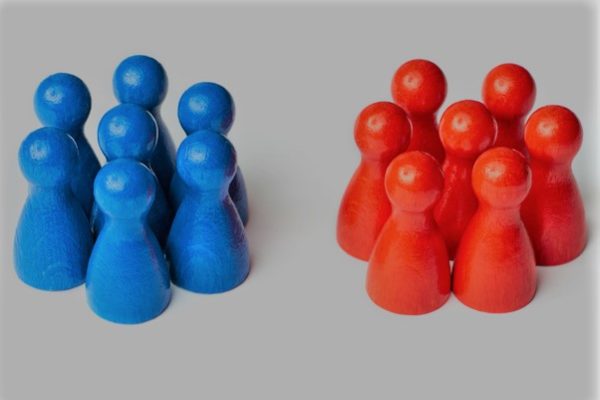 2. Decide what all the audience groups share in common.
2. Decide what all the audience groups share in common.
Once we’d clarified and described our distinct audience groups, we looked carefully for what two or more of these groups shared in common. From this analysis emerged two key groups:
- People in audiences 1 and 2 were all budding entrepreneurs (the types of people TEC counsels and serves every day)
- People in audiences 3 and 4 were primarily highly successful entrepreneurs (the types of people TEC taps every day for its volunteer mentoring program)
We knew the more Hayde revealed what she and TEC shared in common with these two key groups, the better her message would resonate.
3. Commit to only one overarching message — no matter how diverse your audience is.
Based on our audience analysis, we landed on a singular message that positioned both key audience groups as “heroes” in the speech.
Here was the overarching message:
Budding entrepreneurs need to get help and support from highly successful entrepreneurs, and highly successful entrepreneurs need to give help to budding entrepreneurs since they were given a leg up by someone else in the past.
Even though the audiences were very different, this single message – in reality, a call to action – would resonate with every attendee that evening.
Get help. Give help. Pretty simple, right?
And now to execute.
4. Capture their attention immediately.
Since this was an after-dinner speech, people would begin settling deep into their chairs while continuing to enjoy their dessert as the keynote began. So we created an opening we knew they’d remember:
In 1959 – right here in Dayton, Ohio – 31 military test pilots landed at Wright Aeromedical Laboratory, determined and eager to be selected as our nation’s first astronauts.
Here they endured one of the most grueling experiences of their lives.
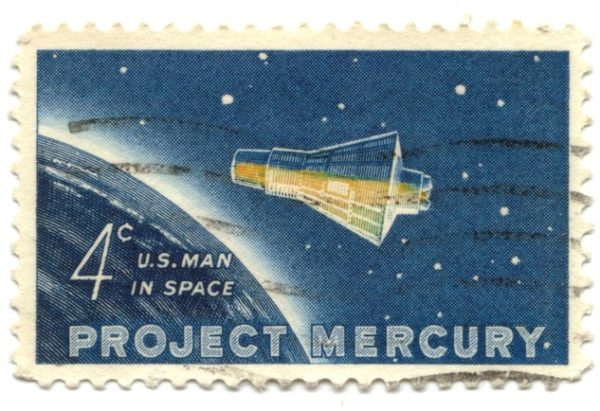 For six days and three nights, these 31 men were tortured to see if they could withstand extreme physical and psychological stress – and emerge all the better for it.
For six days and three nights, these 31 men were tortured to see if they could withstand extreme physical and psychological stress – and emerge all the better for it.
In the end, 24 were sent home. But seven made it through – with flying colors – and were rewarded by making history.
These seven took part in Project Mercury – America’s first manned space program – and became known as the Mercury Seven.
They were cheered. They were celebrated. They were honored as American heroes.
Now why am I telling you all this?
I believe that all the physical and psychological trials those 31 men endured weren’t much different from the ordeals entrepreneurs face as the world tests their tolerance for fear, risk and failure – roadblocks on their path to small business success.
By elevating the status of both current and future entrepreneurs to that of astronauts – American heroes – Hayde got everyone’s attention.
She continued:
Make no mistake: Entrepreneurs are tested every single day, every step of the way:
• Are they bold enough to risk their entire life’s savings to commercialize a new technology?
• Do they have all the right stuff to endure agonizing setbacks?
• Are they willing to put their family’s well-being on the line – with no guarantees?
Or will they fail and go home – just like those 24 unsuccessful astronauts back in 1959?
Failure. That’s the fate an entrepreneur faces today without something very important – something called nurturing – and that’s what I want to talk to you about today.
5. Have a takeaway or a call to action unique to each group.
Throughout the speech, Hayde talked about the “hard side” of nurturing and its “softer side” related to the human condition. Along the way, she busted the myth that budding entrepreneurs are “self-made men” who can “stand on their own two feet.” Instead, she convinced the audience – based on real stories from real clients at TEC – that entrepreneurs need nurturing. That they really can’t go it alone.
As she neared the end, her calls to action for both key audience groups were simple and memorable:
 I encourage us all to do two things.
I encourage us all to do two things.
First, give help. Be willing to nurture other entrepreneurs because they need it, and because we, as a society, benefit from what they do to make our economy better.
The need to nurture entrepreneurs is great and growing. According to the Wall Street Journal, each year in the United States, more people start a business than get married or have children. That’s a lot of people that need a lot of nurturing.
And second, if you’re an entrepreneur, I encourage you to get help.
And please: Never worry that you’re wasting someone’s time vetting your ideas. Believe me: There are dozens of people right here in this room – including me! – who want to help you. In fact, they’d love to help you. All you have to do is ask.
6. Mention specific individuals in the audience to deepen rapport.
Both key groups in the audience, budding entrepreneurs and successful entrepreneurs, could relate to this story she told about a former budding entrepreneur who went on to become a highly successful entrepreneur. Hayde recognized this individual in the audience and called him by name:
Being nurtured can give you renewed strength to look at problems as opportunities. That happened in 2003 to one of our clients, Eric Graham of Gracar, a defense technology firm. One day Eric came into his annual business review meeting and said he was ready to quit. So his TEC team of mentors rolled up their sleeves and worked on a plan to move his company forward.
Three years later, Gracar had 75 employees and more than $11 million in annual revenue. Eric sold Gracar, and now he’s a serial entrepreneur who’s launched several new technology companies. Nurturing made the difference.
7. Then tie the closing back to the opening.
Remember the heroes Hayde referenced in her opening story about the Mercury Seven? What about those feelings of fear, risk and failure that she said are shared by entrepreneurs and astronauts alike?
Hayde recalled that theme again as she ended her speech:
The late Professor Albert Shapiro of The Ohio State University … said: “Entrepreneurs are not ‘born’ … rather they ‘become’ through the experiences of their lives.” And so I ask you to consider this:
What expertise can you lend – what impact can you make – to help the entrepreneurs right here in Dayton become who they are supposed to become?
And entrepreneurs? My message to you is this:
Your tolerance for fear, risk and failure will continue to be tested every step of the way on your journey toward success.
But when you continue to pass these tests – time and time again, with help from those who have gone before you – we will do the same thing for you that we did for our nation’s Mercury Seven astronauts:
• We will cheer you.
• We will celebrate you.
• And we will honor you as American heroes.
 So in the end, did Hayde connect with her wildly diverse audience?
So in the end, did Hayde connect with her wildly diverse audience?
At least 10 individuals immediately approached Hayde after the speech and congratulated her on an outstanding, inspirational, moving address. One of the most memorable comments came from a graduating senior and budding entrepreneur, who rushed up afterward, explained how he held astronauts in such lofty, high regard, and exclaimed, “You made me feel like an astronaut!”
Here are other messages Hayde received after the speech:
- From a UD faculty member and a highly successful entrepreneur: “Your keynote message was spot-on and resonated very well with both students and professional volunteers.”
- From a budding entrepreneur: “Amazing keynote! Your message tonight was so great. Dani’s mom literally said “wow!” under her breath when you concluded. I couldn’t agree more. You’re an inspiration!!!”
- From a highly successful entrepreneur: “Bravo! It was truly an honor to be mentioned in such a classy speech by such a classy entrepreneur this evening. I talked to several people afterward who were in awe with the quality of the speech, the delivery, and most of all, the message. We all need nurturing and you’re the best!”
How else did we know she’d connected with her wildly diverse audience?
- After the event, the speech was posted on TEC’s website for downloading by audience members. Over the next three months, the speech was downloaded 96 times.
- Within three months after the speech, Hayde received two more invitations to deliver her keynote to other organizations in the region.
- One UD student wrote about the keynote later in UD’s School of Business online publication, linking Hayde’s nurturing message to her own nurturing as a UD student and budding entrepreneur.
Paying attention to your audience pays off. So the next time you’re speaking to an audience that’s all over the board, follow these seven steps:
1. First, map your diverse audience into distinct groups.
2. Decide what all the audience groups share in common.
3. Commit to only one overarching message — no matter how diverse your audience is.
4. Capture their attention immediately.
5. Have a takeaway or a call to action unique to each group.
6. Mention specific individuals in the audience to deepen rapport.
7. Then tie the closing back to the opening.
How have you connected with wildly diverse audiences? Let’s chat! Email me at teresa@zumwaldandcompany.com







